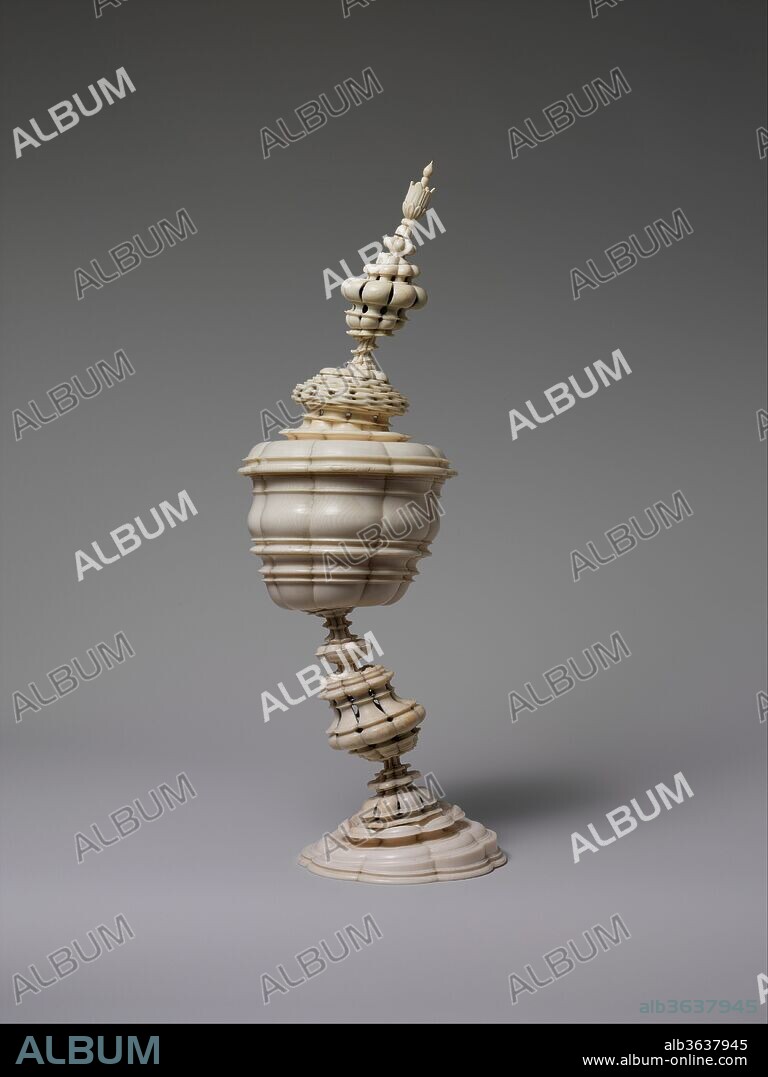alb3637945
Standing cup

|
Zu einem anderen Lightbox hinzufügen |
|
Zu einem anderen Lightbox hinzufügen |



Haben Sie bereits ein Konto? Anmelden
Sie haben kein Konto? Registrieren
Dieses Bild kaufen

Titel:
Standing cup
Untertitel:
Siehe automatische Übersetzung
Standing cup. Culture: German, Nuremberg. Dimensions: Overall: 14 × 5 × 4 1/4 in. (35.6 × 12.7 × 10.8 cm). Maker: Possibly by workshop of Lorenz Zick (1594-1666); Possibly by workshop of Stephen Zick (died 1715). Date: 17th century.
The technique of forming objects on a lathe, or turning, reached a high degree of complexity in the Renaissance and Baroque eras, when French, Italian, and Central European workshops produced paper-thin hollowed-out shapes from single blocks of ivory. Clerics and noblemen embraced turning as a hobby. Among the rulers who collected masterpieces of turning for their Kunstkammern and practiced the art themselves were the Holy Roman Emperors Maximilian II (r. 1564-76), Rudolf II (r. 1576-1612), and Ferdinand III (r. 1619-37). The eccentric form of this cup exemplifies Mannerist taste in Central Europe, though the most challenging aspect of its creation was concocting the lacy hollows that form the stem and spire.
Technik/Material:
MARFIL
Museum:
Metropolitan Museum of Art, New York, USA
Hersteller:
Possibly by workshop of Lorenz Zick (1594-1666) • Possibly by workshop of Stephen Zick (died 1715)
Bildnachweis:
Album / Metropolitan Museum of Art, NY
Freigaben (Releases):
Model: Nein - Eigentum: Nein
Rechtefragen?
Rechtefragen?
Bildgröße:
3170 x 4226 px | 38.3 MB
Druckgröße:
26.8 x 35.8 cm | 10.6 x 14.1 in (300 dpi)
Schlüsselwörter:
 Pinterest
Pinterest Twitter
Twitter Facebook
Facebook Link kopieren
Link kopieren Email
Email
